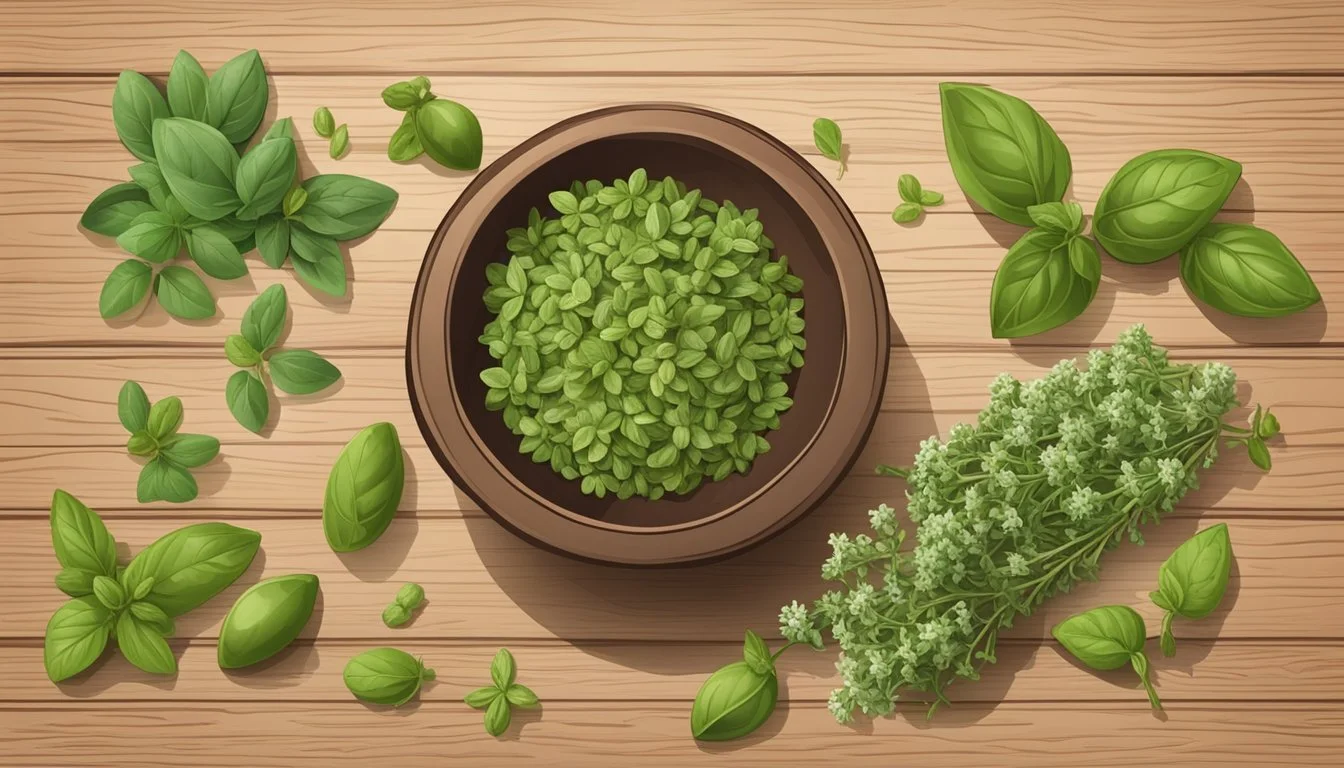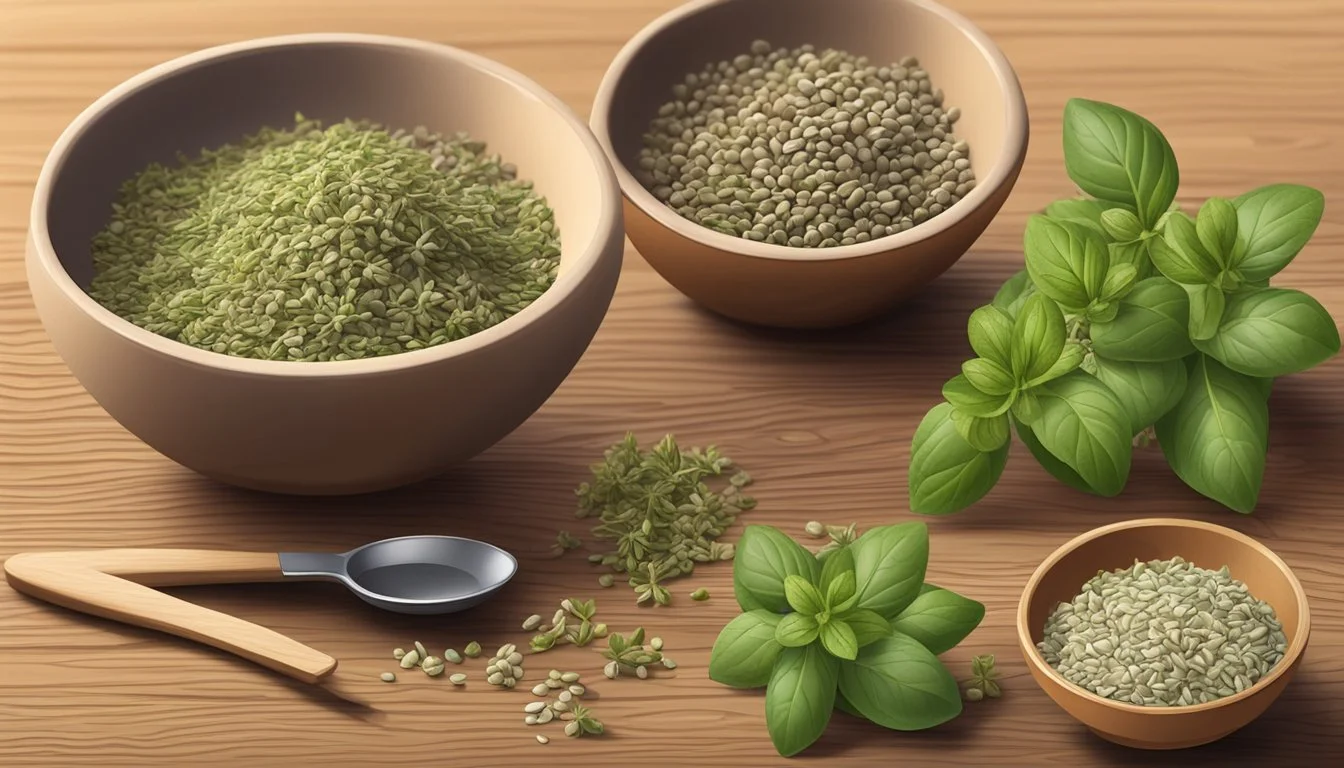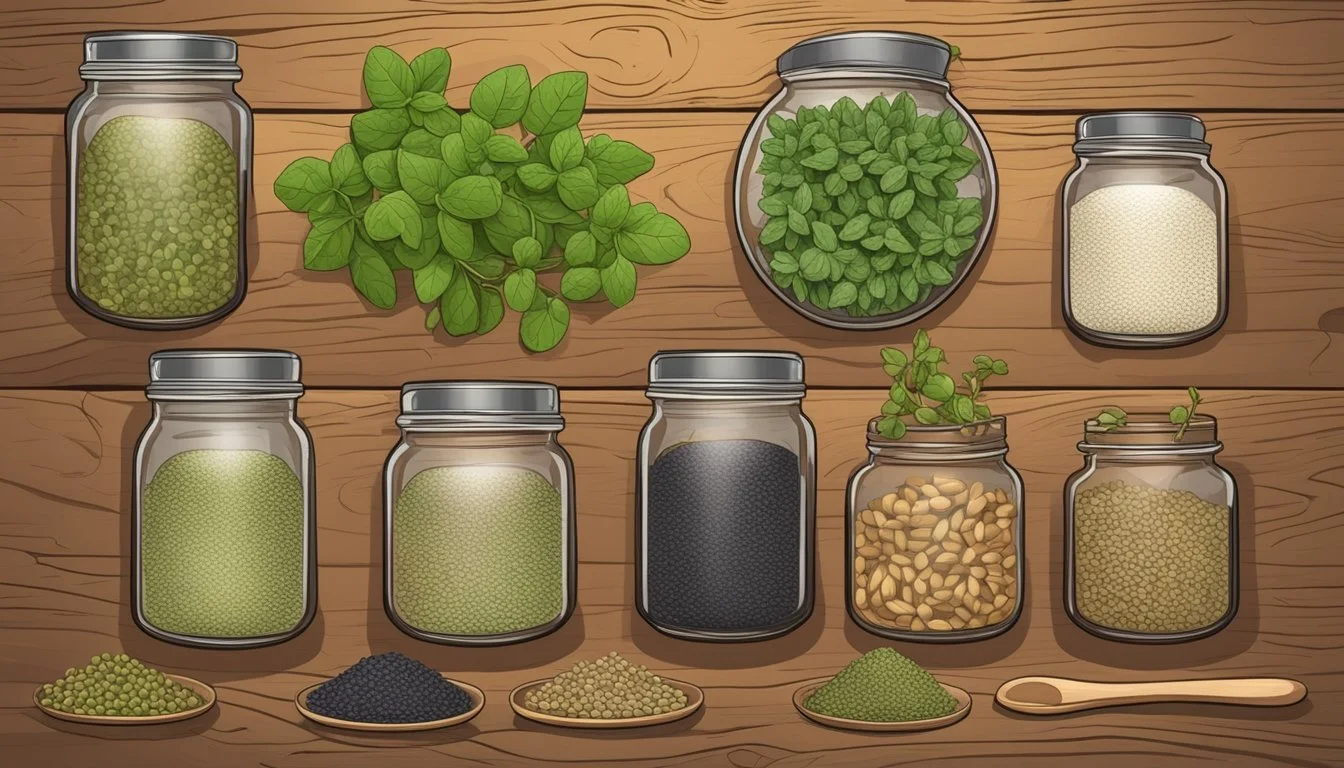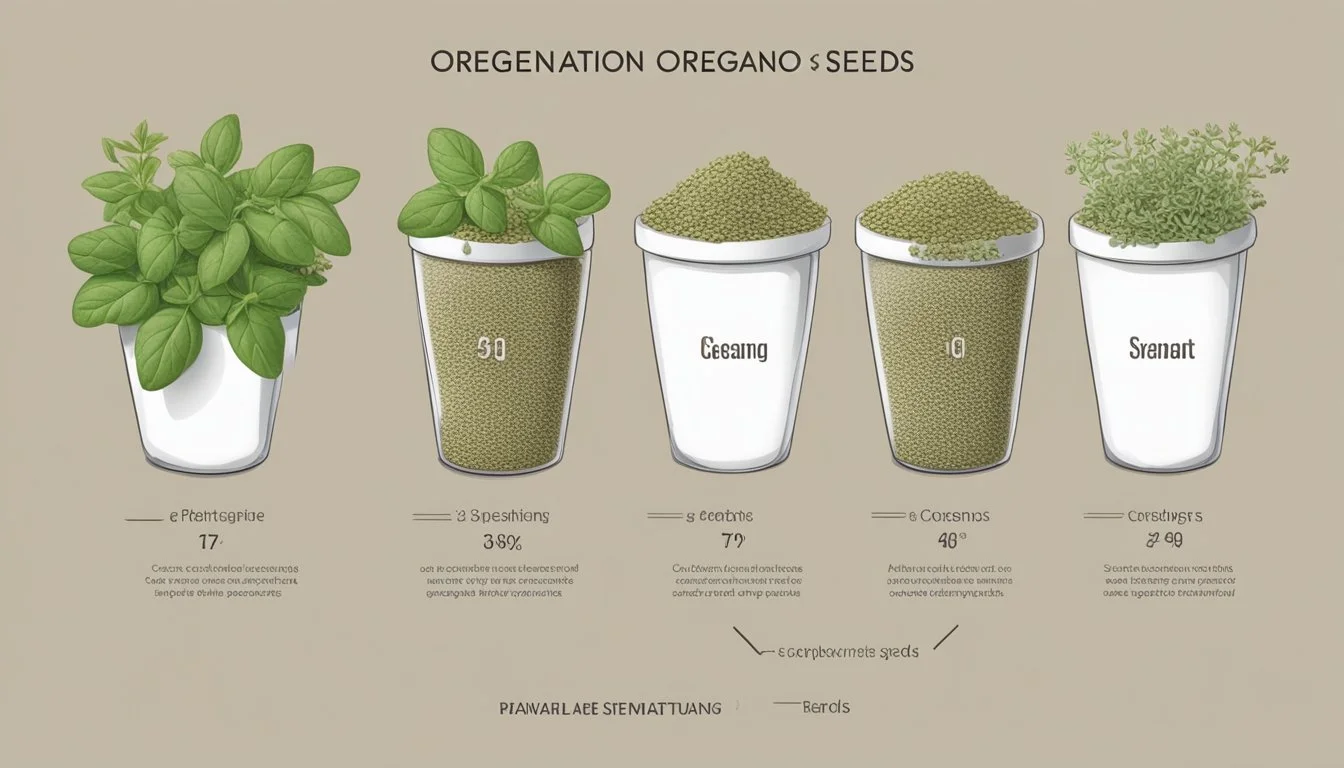Oregano Seeds Substitutes
Best Alternatives for Your Recipes
Many home cooks love the robust and slightly sweet flavor of oregano in their dishes. However, if you find yourself out of oregano seeds, several substitutes can effectively replicate its unique flavor. Knowing which herbs can stand in for oregano could save your recipe and enhance your culinary repertoire.
Herbs like thyme, rosemary, parsley, and even fennel can act as suitable replacements. Fresh thyme, in particular, mirrors the look and taste of fresh oregano very well. Additionally, parsley, commonly confused with oregano, fits seamlessly into many recipes.
Mint and fennel are also noteworthy alternatives. While mint adds a refreshing hint, fennel brings a subtle anise flavor that complements a variety of dishes. Exploring these substitutes opens a world of possibilities for adding dynamic flavors to your cooking without the need for oregano.
Understanding Oregano
Oregano, a staple in various cuisines, is a Mediterranean herb known for its strong, earthy flavor. This herb is integral to dishes from Italy, Greece, and beyond. Below, discover oregano's origin, culinary applications, and more.
History and Origins
Oregano's history traces back to the Mediterranean region. It was widely used by ancient Greeks and Romans, who believed it symbolized joy and happiness. Historically, oregano also had medicinal properties and was used to treat various ailments. Introduced to the Americas by European settlers, oregano has since become an essential herb in Mexican cuisine and other global dishes.
Culinary Uses
Oregano is a versatile herb that shines in Mediterranean dishes, particularly Italian cuisine. It's a key ingredient in pizza sauces, pasta dishes, and marinades. Its presence is also notable in Greek recipes like moussaka and souvlaki. Oregano complements Mexican cuisine, balancing flavors in chili, tacos, and more.
Fresh vs. Dried Oregano
Fresh oregano and dried oregano each bring unique qualities to dishes. Fresh oregano has a more potent and bitter taste, making it ideal for salads and garnishes. Dried oregano offers a concentrated flavor profile, better suited for cooking where a strong flavor is desired. Use them interchangeably, adjusting quantities as needed.
Flavor Profile
Oregano's flavor is strong, earthy, and bitter, with a hint of sweetness. It adds depth to a variety of foods, from roasted meats to tomato sauces. The bitter and peppery notes enhance the overall taste, making oregano a prominent herb in many cuisines, especially Mediterranean and Mexican dishes.
Growing Oregano
Growing oregano is straightforward for garden enthusiasts. This herb thrives in well-drained soil under plenty of sunlight. It's a perennial plant, meaning it will return year after year. Regular pruning encourages growth and enhances the plant's aromatic properties. Fresh oregano from the garden enriches any dish with unparalleled freshness and flavor.
Oregano, through its rich history, culinary versatility, and distinctive flavor, remains a cherished herb in kitchens worldwide.
Identifying Suitable Substitutes
When oregano seeds are unavailable, several substitutes can be used to achieve similar flavors in various dishes. These alternatives include herbs with comparable profiles that blend well in Mediterranean and other cuisines.
Marjoram as an Alternative
Marjoram closely resembles oregano in taste, with a slightly milder and sweeter flavor. This herb serves as an excellent substitute for oregano in a variety of Mediterranean dishes.
In both fresh and dried forms, marjoram integrates seamlessly into recipes like sauces, marinades, and meat dishes. It’s particularly effective when used in pasta sauces and roasted vegetables, providing a subtle depth without overpowering the dish. For a direct substitute, use a 1:1 ratio when swapping marjoram for oregano.
Thyme and Its Varieties
Thyme is another versatile herb that can stand in for oregano. With its robust and earthy flavor, thyme pairs well with numerous recipes, especially those featuring roasted meats, stews, and soups.
Fresh thyme leaves or dried thyme can be used, and the ratios may vary:
Fresh thyme: Use a bit more than oregano due to its milder flavor.
Dried thyme: A one-to-one substitution works well.
Lemon thyme, a thyme variety, adds a citrus twist, enhancing dishes with a zesty note.
The Versatility of Basil
Basil, particularly fresh basil, brings a sweet, peppery flavor similar to that of oregano, making it a good replacement. This herb is widely used in Italian cooking, especially in pasta sauces, pizza, and salads.
When substituting dried basil for oregano, it’s crucial to adjust quantities. Dried basil is more potent than fresh basil. Typically, using about one teaspoon of dried basil for every two teaspoons of oregano provides the right balance.
Using Italian Seasoning Mix
A blend of herbs typically used in Italian seasoning can be an effective oregano substitute. This mixture often includes basil, thyme, rosemary, and marjoram, creating a robust flavor profile suitable for many dishes.
Italian seasoning can be directly used in many recipes:
Sauces and soups: A teaspoon of this mix can replace oregano, adding complexity.
Meat dishes: Use it as a rub or in marinades for an enhanced, herbaceous taste.
Sage: An Earthy Selection
Sage delivers an earthy and slightly peppery taste, making it a unique, yet suitable, alternative to oregano. It pairs particularly well with rich and hearty dishes, such as roasted meats and Mediterranean recipes.
Both fresh and dried sage can be used, though it’s powerful, so it should be employed sparingly. Fresh sage leaves can be finely chopped, while dried sage should be crumbled and measured carefully to prevent overwhelming the dish.
In conclusion, these substitutes offer a range of flavors that can effectively replace oregano seeds in cooking, ensuring each dish retains its unique character and taste.
Substitutes in Common Dishes
Using oregano seeds substitutes effectively can enhance the flavor of your dishes without compromising on taste. Depending on the type of dish, different herbs can be excellent alternatives.
Substitutes for Sauces and Stews
For pasta sauces and stews, basil and parsley are excellent choices. Basil offers a slightly milder flavor similar to oregano and belongs to the same mint family, making it a great match for tomato-based dishes. Parsley, often confused with oregano, can seamlessly blend into rich stews or tomato-based recipes, bringing a fresh, herbaceous note.
Fennel can also be used, particularly in stews and soups. It has a subtle anise-like flavor which can add depth to various recipes. When substituting, use roughly 1 ½ teaspoons of fresh fennel for every 2 teaspoons of oregano.
Suitable Substitutes for Meat Dishes
When preparing meat dishes like roasted meats, marinades, or meat-based stews, rosemary and thyme are reliable substitutes. Rosemary's robust flavor can elevate poultry, roasted meats, and even grilled vegetables. It's particularly effective in marinades, lending a zingy aroma to the dish.
Thyme is another versatile herb that complements meat dishes well. Its earthiness pairs perfectly with roasted meats and poultry, providing a similar depth to what oregano would offer. Using thyme in similar amounts to oregano can bring out the best flavors in your meat dishes.
Vegetarian and Salad Alternatives
In vegetarian dishes and salads, fenugreek and dill provide unique flavors while substituting for oregano. Fenugreek, with its sweet, nutty flavor, works wonderfully in bean dishes and salads, including Greek salad. It’s also great when used sparingly in vegetable recipes.
Dill is perfect for fresh salads, cucumber dishes, and vegetarian stews. Its light and feathery leaves add a grassy, slightly tangy touch that can mimic the freshness of oregano while contributing to the complexity of the dish.
Herbs for Baking and Garnishing
For baking and garnishing, consider using chives and cilantro. Chives, with their mild onion-like flavor, make a great garnish for baked goods, soups, and stews. They add a mild zing without overpowering the other flavors.
Cilantro can also be an exciting substitute for garnishing. Its citrusy notes bring a refreshing twist to pizzas, salads, and even certain baked dishes. Use fresh leaves to replace oregano seeds directly where a lighter, fresher taste is desired.
Exploring Less Common Substitutes
When searching for oregano seed substitutes, exploring less common aromatic herbs and spices can result in pleasant surprises. Some worthy alternatives include summer savory, fennel, fenugreek, lemon, mint, and parsley, each offering unique flavors and characteristics that enrich various dishes.
Summer Savory and Its Plethora
Summer savory is a potent herb that provides a peppery, thyme-like flavor, making it a robust alternative to oregano. It's often used in traditional Mediterranean dishes and pairs wonderfully with beans, lentils, and meats. Fresh or dried, summer savory can be substituted at a 1:1 ratio for dried oregano. Its slightly spicy note adds an unexpected kick, perfect for those who enjoy a little adventurous taste in their cooking.
Key Points:
Peppery and thyme-like flavor.
Ideal for Mediterranean dishes.
Works well with beans, lentils, and meats.
Fennel and Fenugreek: The Unusual Picks
Fennel brings a sweet, licorice-like flavor that can stand in for oregano, especially in soups and stews. Its unique taste can transform a dish, offering a fresh take on traditional recipes. Finely chop fresh fennel fronds or use a pinch of crushed fennel seeds.
Fenugreek, known for its slightly bitter and maple-syrup-like undertones, is another intriguing substitute. It works best in rich, hearty dishes like curries or roast meats. Using fenugreek seeds or leaves in place of oregano requires a careful hand, as the flavor can be quite potent.
Key Points:
Fennel offers a sweet, licorice flavor.
Fenugreek has bitter, maple-syrup undertones.
Best in soups, stews, curries, and roasts.
Citrusy Hints with Lemon and Mint
A combination of lemon zest and fresh mint can add a citrusy and refreshing note reminiscent of oregano's bright flavor. This blend works exceptionally well in salads, marinades, and light sauces. Use lemon zest and chopped mint in equal parts to replace oregano, giving dishes a summery lift.
Mint alone, though sweet and cooling, can balance savory dishes with its unique profile. While not a direct substitute in all recipes, mint's refreshing taste can enhance certain Mediterranean and Middle Eastern cuisines.
Key Points:
Lemon zest and mint give a citrusy, refreshing note.
Ideal for salads, marinades, and light sauces.
Enhances Mediterranean and Middle Eastern dishes.
Parsley Instead of Oregano
Parsley, both fresh and dried, can stand in for oregano, offering a mild flavor that blends well in many recipes. Although parsley lacks the complexity of oregano, its fresh and slightly peppery taste can complement a variety of dishes without overpowering them.
Fresh parsley is great for garnishing and adding color, while dried parsley holds up well in cooked dishes. When substituting, a 1:1 ratio typically works, but adjust based on personal taste and dish requirements.
Key Points:
Mild, slightly peppery flavor.
Both fresh and dried parsley are useful.
Complements many dishes without overpowering.
Conversion Ratios and Quantities
When it comes to swapping fresh oregano for its dried counterpart, knowing the precise conversion ratios and understanding how to adjust for potency or pair with other herbs can make all the difference in your cooking. The following guidelines will help you navigate these conversions with confidence and precision.
General Conversion Guidelines
Converting fresh oregano to dried oregano often follows a simple ratio: 1 tablespoon of fresh oregano equals 1 teaspoon of dried oregano. This 3:1 (fresh to dried) ratio is due to the higher concentration of flavors in dried herbs.
It's important to measure accurately to avoid overpowering your dish. When working with ground oregano or oregano seeds, smaller quantities are typically needed due to their concentrated flavors.
Fresh Oregano Dried Oregano 1 tablespoon 1 teaspoon
Adjusting for Potency and Taste
The potency of dried oregano is stronger than fresh, meaning a little goes a long way. Taste as you cook and adjust quantities gradually. Start with less than the recommended ratio and add more if required.
The quality of dried herbs can vary. Fresher dried oregano will require less to achieve the same flavor impact as older dried oregano, which may have lost some of its potency.
Herb Pairings and Complementary Flavors
Oregano pairs well with various herbs, enhancing the overall flavor profile of a dish. Common pairings include basil, thyme, and rosemary, all of which complement the robust, slightly peppery taste of oregano.
For specific cuisines, such as Italian or Greek, oregano is often combined with other Mediterranean herbs. Understanding these pairings can help you create rich, harmonious flavors in your recipes.
Herb Pairing Flavor Profile Basil Sweet, somewhat peppery Thyme Earthy, slightly minty Rosemary Pungent, woody, astringent
These tailored herb combinations can elevate your cooking, ensuring that the balance of flavors aligns with the dish's intended taste.
How to Buy and Store Substitutes
Choosing the right substitutes for oregano seeds involves knowing how to purchase and store both fresh and dried herbs properly. Key points include where to find high-quality herbs, what to look for when buying, and how to store them to maintain their freshness and potency.
Purchasing Tips for Fresh and Dried Herbs
When buying fresh herbs like basil or marjoram, look for vibrant, green leaves that are free of wilting or brown spots. Fresh herbs should be fragrant and crisp, indicating their vitality. Farmers' markets or specialty grocery stores often provide the freshest options.
For dried herbs, ensure they are housed in airtight containers and kept away from direct sunlight. The herbs should be fragrant when opened; a stale or musty smell indicates they are past their prime. Brands like McCormick or Frontier Co-op are reputable sources for quality dried herbs.
Storing Herbs to Maintain Freshness
For fresh herbs, a good practice is to store them in the refrigerator. Place the herbs in a jar with an inch of water, covering them loosely with a plastic bag to keep them hydrated. Change the water every few days to preserve their freshness.
Dried herbs should be stored in a cool, dark place, such as a pantry or cupboard. Keeping them in their original sealed containers or transferring them to airtight jars is ideal. Avoid storing dried herbs above the stove or in other hot areas, as heat can degrade their quality.








